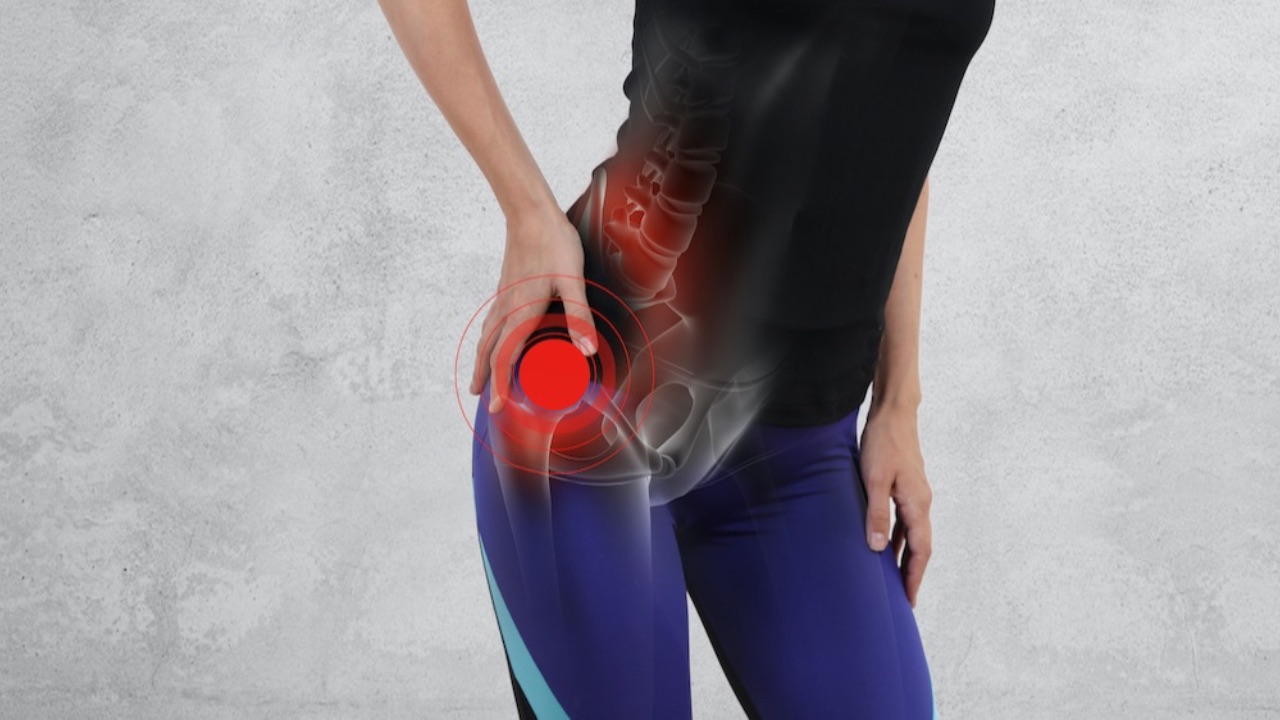
Say goodbye to menopause joint pain with Yin Yoga
Sep 17, 2023Menopause join pain brings many challenges and they often show up in the simplest of tasks such as bending down to tie shoelaces, putting on socks, picking up something off the floor or even reaching for the top shelf! It feels like our joints have become stuck and are physically holding us back. Well they are. But it might not be your joints that are causing the problems - the issues could be in your connective tissues (or fascia). But don't worry, Yin Yoga offers the perfect remedy for menopause and joint pain.
Joint pain and menopause
If you’re wondering why your joints suddenly feel tighter and you’re struggling with menopause muscle aches and pains, it’s down to the powerful hormonal shifts that are happening within your body.
Joint pain is just one of the horrible perimenopause symptoms that can start in the period before menopause officially begins. The main culprit is declining levels of oestrogen which directly affects the tissues in the joints which causes them to lose some of their natural lubrication, making movement feel more challenging. But there's a new kid on the block that's also responsible for joint pain from menopause - and that's fascia.
What is fascia?
For many years, we’ve thought of the body as a series of separate parts, and it’s been assumed that our muscles, skin and bones hold us all together. However, medics now realise that it’s actually our fascia that envelops us and holds us together - not too dissimilar to the transparent layer of skin surrounding every segment in an orange. Fascia is like a cling-wrap all around all our muscles, bones, nerves, arteries and veins in our bodies, as well as all our internal organs, including the heart, lungs, brain and spinal cord.
As well as holding us together, fascia lives between every cell in the body and offers support and reduces friction during everyday movements. It consists of cord-like fibers that run everywhere - even through tendons and cartilage - and they help keep our skeleton in shape, guide our movements and coordinate our postural patterns. But fascia also weaves around our joints too which can lead to reduced mobility and menopause joint pain, and this can show up in the hips, shoulders, wrists, knees, ankles, and even fingers and toes!
Fascia and menopause joint pain
Fascia is a watery substance with a high proportion of collagen. In a healthy state, it’s a relaxed and wavy connective tissue. However, long term stress, trauma, accidents, and even poor posture can cause the fibers to thicken in order to protect the underlying muscle.
Also, as we age and enter menopause, the drop in oestrogen causes the joints to dry out and we begin to lose collagen which makes the fascia gradually become denser and tighter. This creates a barrier that reduces nourishment reaching our cells which in turn restricts our range of motion leading to pain and decreased blood flow which results in joint pain.
What is Yin yoga?
This is where Yin Yoga comes in. One of the most effective and less well-known styles of yoga, Yin is a subtle and slow practice where every posture targets fascia in the body. Typically, Yin poses are held for between 2-5 minutes to help stretch and ease the fiber webbing.
As the fascia fibers begin to slowly thin out and become ‘unglued’; our movements improve and we can enjoy greater flexibility and mobility of our joints.
However, Yin Yoga is not a quick fix. Areas that have been damaged for a long time will take time and patience, so regular stretching is recommended to alleviate joint pain in menopause.
Yin yoga benefits
Yin Yoga provides the perfect balance for those with fast-paced lives or who have an active sports or yoga practice. Even top athletes now incorporate Yin into their recovery programs as a way of increasing flexibility, relieving tightness and relaxing body. It is also ideal for older people looking to regain mobility in their joints. Because if its slow and passive style, Yin is also very relaxing and soothing for the mind - a win win in menopause.
So, if menopausal joint pain is getting the better of you, then Yin Yoga may be the answer. Not only will your joints thank you for it, it could be the perfect remedy for bringing yourself back into balance in menopause.
Why not discover the power of Yin Yoga with this short sequence that involves zero movement? Your menopause joints will thank you.
Have you taken our FREE Menopause Quiz?
To discover other natural solutions will best help your menopause symptoms, we invite you to take our FREE Menopause Quiz. In in just under 5 minutes, this quick and insightful quiz will unveil essential insights across four key dimensions of your menopause wellbeing – physical, mental, emotional, and future self - providing you with your personalised wellbeing score and recommendations for your menopause journey.

